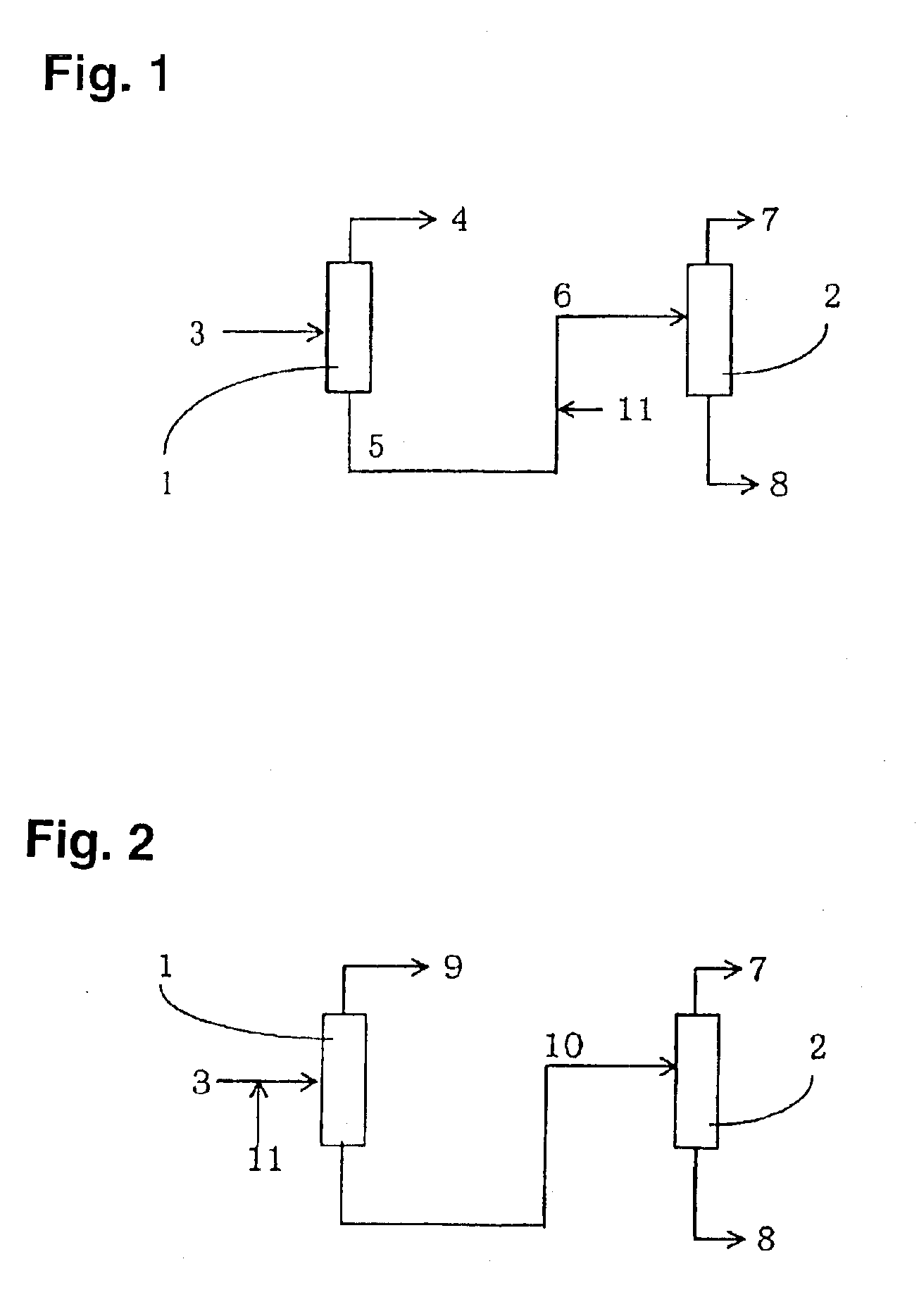Less colored trans-1,3-dichloropropene and process for its production
- Summary
- Abstract
- Description
- Claims
- Application Information
AI Technical Summary
Benefits of technology
Problems solved by technology
Method used
Image
Examples
example 1
[0040]500 mL of a bottom having 3-chloropropene separated by distillation from the reaction product of propene with chlorine (the composition of the bottom is shown in the column for the bottom in Table 1), was subjected to batch distillation by a distillation tower of 50 plates under conditions of a distillation temperature of 60° C. and a pressure of 100 hPa. A composition comprising C3 compounds and a cis-isomer in the bottom, was fractionated and removed as a low boiling component. And, in the batch distillation, 150 mL of a crude liquid comprising C6 compounds and a trans-isomer, was obtained as a high boiling component.
[0041]Then, the crude liquid was mixed with chlorine gas in an amount of 1.2 times by mol of the C6 compounds contained in the crude liquid, and chlorine was reacted to the crude liquid at 30° C. under atmospheric pressure. Thereafter, hydrogen chloride was removed by nitrogen. Then, this crude liquid was distilled by a distillation tower of 5 plates under condi...
example 2
[0042]The same bottom as in Example 1 was supplied to a distillation tower of 30 plates at a rate of 100 mL / hr and continuously distilled under conditions of a distillation temperature of 60° C. and a pressure of 100 hPa. A composition comprising C3 compounds and a cis-isomer in the bottom, was continuously fractionated and removed as a low boiling component. As a high boiling component of the distillation, a crude liquid was withdrawn at a rate of 30 mL / hr from the tower bottom.
[0043]Then, in the same manner as in Example 1, the crude liquid was mixed with chlorine gas in an amount of 1.2 times by mol of the C6 compounds contained in the crude liquid, and chlorine was continuously reacted at 30° C. under atmospheric pressure. Thereafter, the crude liquid was passed through a granular sodium hydroxide-packed column to remove hydrogen chloride. Then, the passed crude liquid was distilled by a distillation tower of 5 plates under conditions of a distillation temperature of 60° C. and ...
example 3
[0044]The same bottom as in Example 1 was firstly mixed with chlorine gas in an amount of 1.5 times by mol of the C6 compounds in the bottom, and chlorine was continuously reacted at 30° C. under atmospheric pressure. Then, the bottom was supplied to a distillation tower of 30 plates at a rate of 100 mL / hr and continuously distilled under conditions of a distillation temperature of 60° C. and a pressure of 100 hPa. A composition comprising C3 compounds and a cis-isomer, was continuously fractionated and removed as a low boiling component. As a high boiling component of the distillation, a crude liquid comprising chlorinated C6 compounds and a trans-isomer, was withdrawn from the tower bottom. Further, the obtained crude liquid was continuously distilled by a distillation tower of 5 plates under conditions of a temperature of 60° C. and a pressure of 100 hPa, to obtain a trans-isomer of high purity as a low boiling component from the top of the tower at a rate of 23 mL / hr. As analyti...
PUM
| Property | Measurement | Unit |
|---|---|---|
| Color | aaaaa | aaaaa |
| Boiling point | aaaaa | aaaaa |
| Purity | aaaaa | aaaaa |
Abstract
Description
Claims
Application Information
 Login to View More
Login to View More - R&D
- Intellectual Property
- Life Sciences
- Materials
- Tech Scout
- Unparalleled Data Quality
- Higher Quality Content
- 60% Fewer Hallucinations
Browse by: Latest US Patents, China's latest patents, Technical Efficacy Thesaurus, Application Domain, Technology Topic, Popular Technical Reports.
© 2025 PatSnap. All rights reserved.Legal|Privacy policy|Modern Slavery Act Transparency Statement|Sitemap|About US| Contact US: help@patsnap.com

